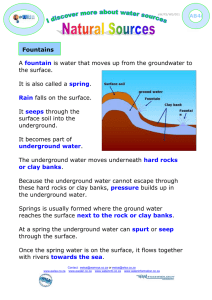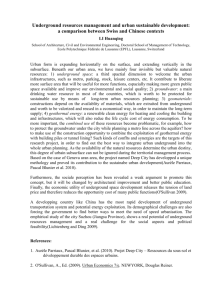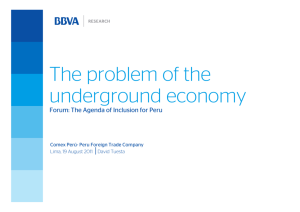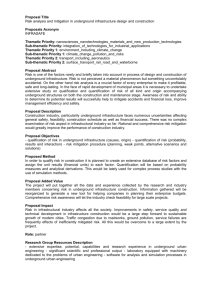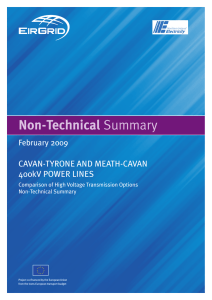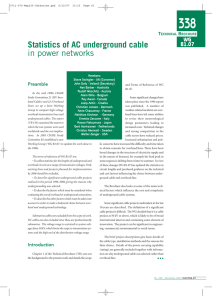Underground transmission lines
advertisement
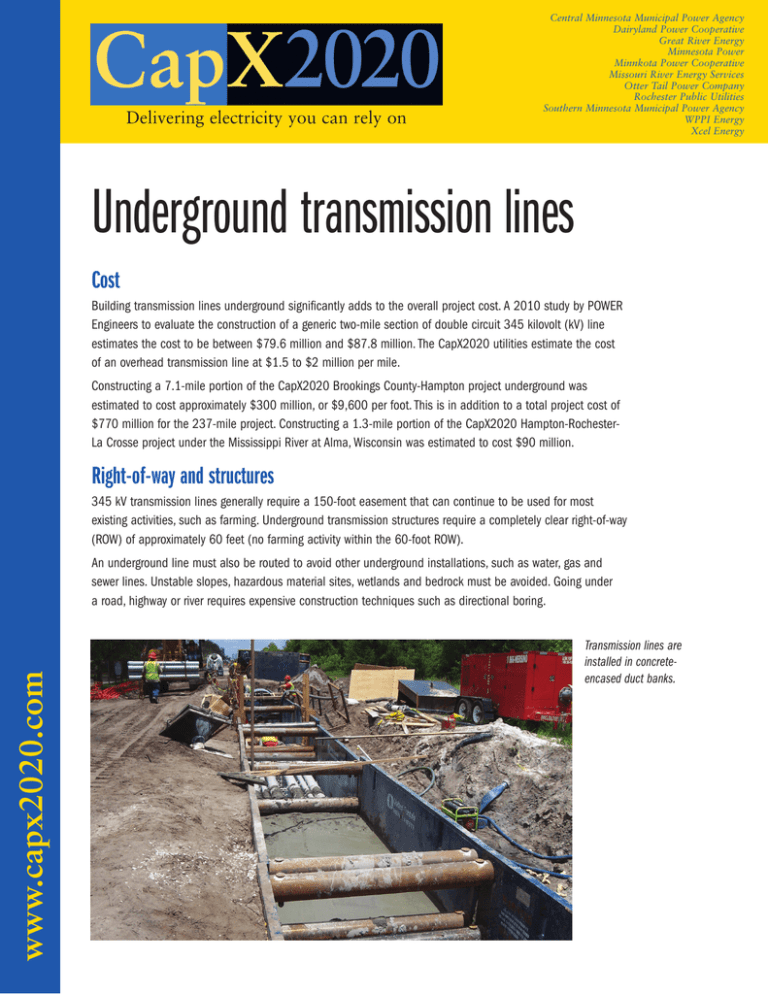
Delivering electricity you can rely on Central Minnesota Municipal Power Agency Dairyland Power Cooperative Great River Energy Minnesota Power Minnkota Power Cooperative Missouri River Energy Services Otter Tail Power Company Rochester Public Utilities Southern Minnesota Municipal Power Agency WPPI Energy Xcel Energy Underground transmission lines Cost Building transmission lines underground significantly adds to the overall project cost. A 2010 study by POWER Engineers to evaluate the construction of a generic two-mile section of double circuit 345 kilovolt (kV) line estimates the cost to be between $79.6 million and $87.8 million. The CapX2020 utilities estimate the cost of an overhead transmission line at $1.5 to $2 million per mile. Constructing a 7.1-mile portion of the CapX2020 Brookings County-Hampton project underground was estimated to cost approximately $300 million, or $9,600 per foot. This is in addition to a total project cost of $770 million for the 237-mile project. Constructing a 1.3-mile portion of the CapX2020 Hampton-RochesterLa Crosse project under the Mississippi River at Alma, Wisconsin was estimated to cost $90 million. Right-of-way and structures 345 kV transmission lines generally require a 150-foot easement that can continue to be used for most existing activities, such as farming. Underground transmission structures require a completely clear right-of-way (ROW) of approximately 60 feet (no farming activity within the 60-foot ROW). www.capx2020.com An underground line must also be routed to avoid other underground installations, such as water, gas and sewer lines. Unstable slopes, hazardous material sites, wetlands and bedrock must be avoided. Going under a road, highway or river requires expensive construction techniques such as directional boring. Transmission lines are installed in concreteencased duct banks. Garage-sized concrete access structures must be placed underground every 1,500 to 2,500 feet for maintenance and repair of an underground line. At either end of an underground section of the line, large one-acre transition structures (mini-substations) need to be constructed. A solid dielectric underground cable is significantly larger than a standard conductor that hangs from an overhead structure. The CapX2020 345 kV overhead structures will carry at least six conductors. Technical issues • Cable. The most commonly used underground cable systems are solid dielectric and high-pressure fluid-filled. Solid dielectric cable is buried in wide trenches about six feet deep and installed in concrete-encased duct banks. For a fluid-filled system, once the cable has been installed in a steel pipe, the pipe is filled with a synthetic oil or gas and pressurized. This type of system is also trenched and covered with specialized backfill, sand or other type of soil. • Heat. Transmission lines generate heat when conducting electricity. Overhead lines are naturally cooled by air. Underground lines must be artificially cooled. Fluid-filled cable systems are cooled by oil or gas in addition to placement of corrective backfill around the pipe for heat dissipation; duct banks that contain a solid dielectric cable are covered by concrete to dissipate heat. • Repair and maintenance. Underground transmission lines can take much longer to repair than overhead lines. Estimates show that locating and repairing faults can take between two and six weeks. Overhead lines can generally be repaired in a matter of hours or days after a fault occurs. Electric and magnetic fields Like overhead transmission lines, underground transmission lines also emit electric and magnetic fields. Burying transmission lines underground does not shield magnetic fields. 5-03-2010

